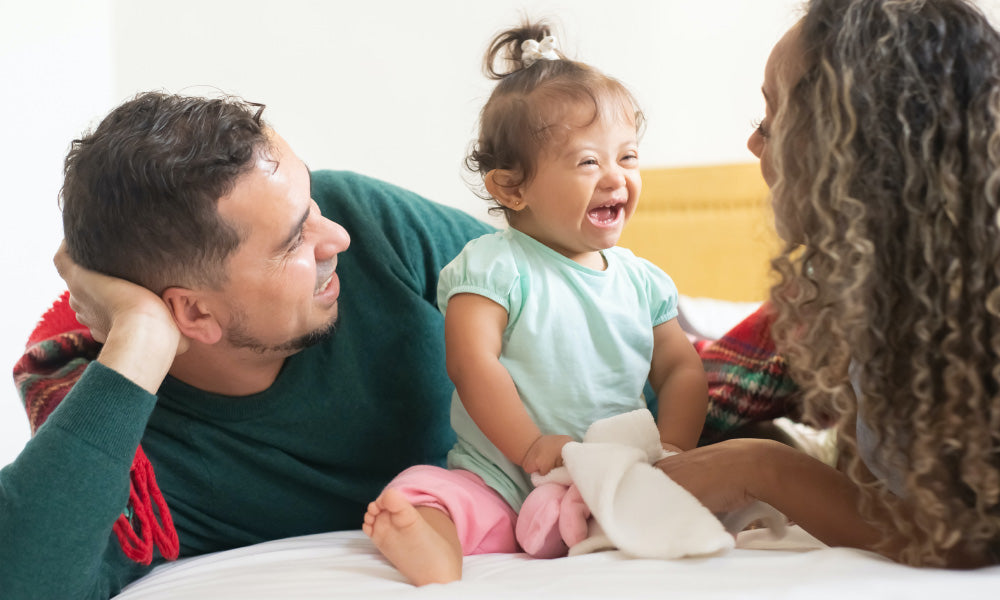Roughly half a million children are in the foster care system in the U.S. About half are eventually reunited with their families, while one-fifth are adopted. Many of them entered the foster system as victims of abuse and neglect.
But what about the foster parents who step in to care for these vulnerable children when they are in crisis? While there is plenty of data about foster children, information about foster parents can be elusive. I talked to foster parents, not to obtain statistics, but to hear their stories. This is what they want you to know.
1 | Foster parents aren’t superheroes
Most foster parents I talked to want to dispel the myth that they’re saints.
Colorado foster parent Heather Grimes says she’s accustomed to people telling her “I could never do that.” Grimes and her husband have one biological child and have fostered two younger children, one of whom they adopted. While she says it took a lot of soul-searching to become foster parents, their decision was not driven by the conviction that they were somehow superhuman. Rather, they chose to take on the challenge in order to show their biological daughter the value of helping others. They also felt it was important to be open to the experience, rather than ruling it out based on fear of the unknown.
Foster parents are, in many ways, like all parents, says Dr. John DeGarmo. Having fostered over 50 children and the director of The Foster Care Institute, he understands how vulnerable foster parents are to fatigue, setbacks, and disappointments: “There are times when we succeed, and there are times when we experience failures. We are not the perfect parents. We are simply trying our best to provide a home and family for a child who needs one, and help a child in need.”
2 | Yes, dealing with loss is hard (but not impossible)
Many foster parents mentioned they frequently field questions about what happens when a child is taken away from them.
Mary and Ken, foster parents in Rhode Island whose foster child was ultimately reunited with his family, talked about how often people express apprehension over the idea of getting “too close” to the child only to have the child reunite with their biological family.
Mary says she finds that perspective “peculiar,” considering people rarely, if ever, take this stance on other relationships. “We don’t avoid having good friends or a romantic relationship because those engagements might someday come to an end. In fact, many of them do end, and we accept that as part of our life experience.”
As an expert in the field, Dr. DeGarmo encounters this question several times a week: “Doesn’t it hurt it too much to give them back?” Of course it hurts, he says; heartache is to be expected. “When the child leaves our home and our family, our hearts should break. We should experience feelings of grief and loss. After all, we have given all of our hearts and love to a child in need.”
Heather Grimes, whose first foster child ended up being returned to her biological family, says it was extremely challenging – though certainly not impossible – to be separated from that child, who lived with the Grimes’ for nearly a year. Two years later, Grimes says, “Her photo is still on our fridge, from her first birthday, in that adorable denim jumper, sitting on the fake grass outside of Sweet Cow ice cream. Her eyes are the most gorgeous shade of blue.” While the Grimes’ may have moved on with their lives, that little girl is still in their hearts.
3 | Foster kids are not bad kids
Many parents said they often receive comments about how hard it must be to deal with difficult, out-of-control kids. In reality, says Emily, a foster parent in Missouri, most are not bad kids. Currently the foster mom of a two-year-old and having fostered three children previously, she explains, “They just grew up in chaotic, unhealthy environments without proper adult supervision. They are capable of learning the right way to behave, express their emotions, etc. if you take the time to show and teach them.”
Tammy Hoskins says being trauma-informed is crucial in supporting foster children. Hoskins works for a Virginia non-profit serving the needs of high-risk youth. She is the mother of 10 children, four of whom are biological children and six of whom she adopted through the foster system.
Because their brains are still developing, children are especially vulnerable to the deleterious effects of trauma, including difficulty with learning, social-emotional development, brain structure, cognition, physical health, and attachment. Says Hoskins, “To understand, to empathize, and to work with them in collaborative ways to solve problems is crucial to their healing.” The work of Daniel Siegel, Karen Purvis, and webinars available through the Center for Adoption Support and Education (CASE) are among the many resources she recommends foster parents take advantage of.
4 | The foster system isn’t just a cold bureaucracy
While the foster system can be impersonal and frustrating, known for its many rules and regulations, it has its upsides, too. Heather Grimes was surprised to find how much she appreciated being part of the foster system. “I appreciated interacting with the parents of


